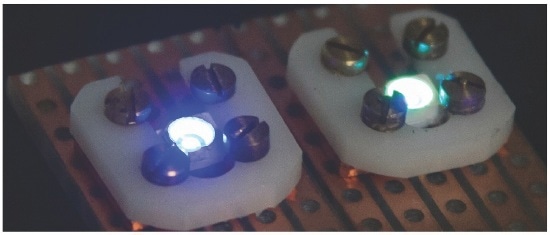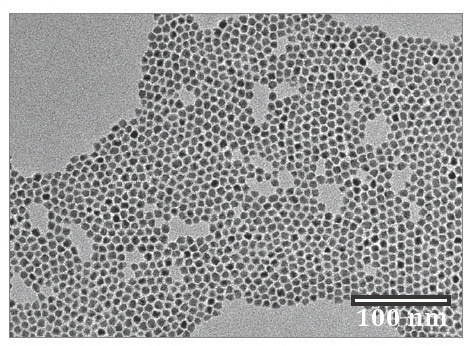CAN GmbH has been involved in the development of many different fluorescent nanoparticle systems, such as StremDots™ Series A, C and X, for use as phosphors in LEDs. These materials have small particle diameters, narrow size distributions and prolonged stability.
Moreover, they show superior fluorescence properties such as high thermal stability, tunable emission wavelength and quantum yields. These characteristics make them ideal for applications demanding fluorophores.
Novel Production Process
A patent pending continuous flow process enables manufacturing StremDots™ nanoparticles in even larger quantities at an unprecedented low cost. Furthermore, high reproducibility of all particle properties is ensured at every production volume by this method. As these particles have high thermal and long-term stability, they are especially suitable to be applied as fluorophores in LEDs (Figure 1).

Figure 1. StremDots™ particles are suitable for applications where fluorophores are needed
StremDots™ Series A, C and X Nanoparticles
CAN GmbH, through Strem Chemicals, supplies StremDots™ Series A nanoparticles with emission wavelengths covering the VIS range and StremDots™ Series C particles covering the IR range. A TEM image of StremDots™ Series A particles is depicted in Figure 2.

Figure 2. TEM image of StremDots™ Series A particles
Figure 3 shows the StremDots™ Series A particles under UV excitation and Figure 4 illustrates the modification of a LED spectra by StremDots™ Series A particles.

Figure 3. StremDots™ Series A under UV excitation

Figure 4. StremDots™ Series A particles modifying a LED spectra
The StremDots™ Series X exhibits very narrow emission at distinct wavelengths between the VIS range and IR range. The characteristics of StremDots™ Series A, C and X are listed in the following table:
| StremDots™ Series A and C |
| Material |
semiconductor (Cd- or Pb-based) |
| Dispersibility |
nonpolar organic solvents |
| Emission |
narrow emission peaks |
| Emission wavelength |
Series A: 550 - 625 nm Series C: 1 -1.6 pm |
| StremDots™ Series X |
| Material |
rare-earth, doped vanadates/ phosphates |
| Dispersibility |
polar solvents, like water and alcohols |
| Emission |
distinct emission peaks |
| Emission wavelength |
emission depending upon dopant |
Using chemical engineering, CAN GmbH provides customizable dispersibility of StremDots™ Series A, C and X in various paints, inks, solvents or solid matrices for easy application.

This information has been sourced, reviewed and adapted from materials provided by Strem Chemicals.
For more information on this source, please visit Strem Chemicals.